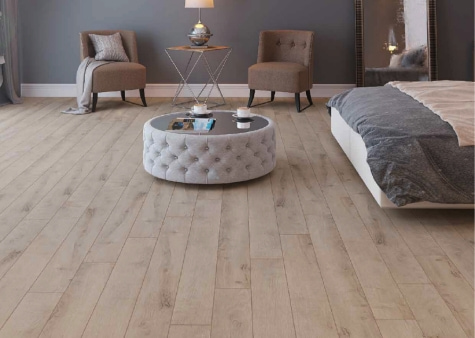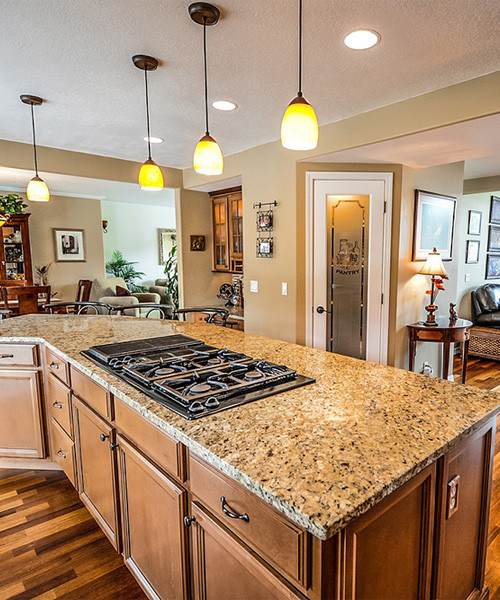Useful tips for installing laminate flooring
The installation of laminate flooring requires careful planning to create a floor that is not only visually appealing but also durable. Before you start assembling the flooring, it is extremely important to choose the right materials, prepare the room and follow the exact installation steps.
The laminate flooring is a preferred choice because of its endurance and a wide range of decors and surfaces. It is suitable for residential, commercial and public spaces. In order to achieve excellent installation results, it is necessary to follow a number of specific techniques and procedures.
Selection of materials and floor preparation
The flooring selection is one of the most important steps in renovating the interior of your home. The market offers a wide variety of flooring options. Whether you choose wood, marble, stone or vinyl, you should carefully explore the pros and cons of each proposal. If you have already done your research and focused your attention on laminate flooring, we will give you guidelines on how to prepare for its installation.
When choosing laminate flooring, take into account the purpose of the room and the style of decoration. Laminate flooring is available in different thicknesses, patterns, structures, locking systems and wear resistance classes, which allows you to find the perfect solution for any interior space.
Before proceeding to the installation of the laminate, it is important to comply with a number of requirements in the preparation process. The first step is to take precise measurements of the installation area and calculate the required amount of laminate flooring. It is advisable to purchase additional quantities to avoid unforeseen installation situations.
After purchasing the laminate flooring, it must stay in the room where it will be installed for at least 48 hours before placement. In this way you will achieve adaptation to ambient temperature and humidity. The air temperature in the room should be at least +18°C, the floor temperature should be at least +15°C, and the relative humidity should be in the range from 40 to 70%. This pre-tempering significantly minimizes the possibility of occurring problems during installation.
To ensure the correct installation of laminate flooring, it is essential that the floor is completely flat. All bumps and protrusions must be removed, as any deviation greater than 2 mm per meter can compromise the quality of the flooring. You need to make sure that the floor is also well cleaned - remove any debris, dirt and dust.
Make sure that the floor is completely dry. Any presence of moisture can lead to the appearance of mold and mildew under the flooring, which can cause structural changes in the planks and overall damages of the floor.
After the floor is prepared, it is necessary to make sure that it is solid enough and resistant to deformations in order to provide a stable base for the installation of the laminate flooring. Laminates can be installed on a concrete base, other floor screeds or ceramic tiles. If there is already another flooring laid, make sure that its hardness is high enough to prevent problems during installation. Laminate flooring can also be laid on surfaces where underfloor hitting systems with water circulation are used. In these cases, instead of a standard underlay, it is recommended to use craft paper. In the case of electrical underfloor heating systems that are placed under the screed or concrete layer (in no case above it), the installation of flooring is possible in cases where the temperature of the floor surface will not exceed 28°C. The use of panel floor heating systems as a base for assembling the laminate is also possible, provided that the manufacturer of the heating system ensures that the surface temperature does not exceed 28°C. Standard electrical underfloor heating systems available on the market often raise the floor temperature above the permissible 28°C and due to the frequent temperature changes, when switching on and off, are not suitable for placing of laminate flooring.
The next step in the installation process is the laying of underlay (polyethylene mats) to provide moisture, heat and sound insulation to the floor. Their use also helps to level small irregularities on the floor, which are no larger than 2 mm per meter. They should be located parallel to the long side of the planks and should cover the entire surface of the room. It is important that the underlay sheets are placed tightly next to each other, leaving no empty space between them, to provide a stable and insulating base for the laminate.
Laminate flooring installation techniques
The installation of laminate flooring requires attention to detail and dexterity. As a floating structure, laminate flooring should not be screwed, nailed or glued to the floor.
Take a close look at the clicks (groove and tongue) on the long and short sides of the plank. Keep in mind that there are slight differences in their type within the different locking systems.
Different options for laying flooring are possible, each of which has its own specifics. We will introduce you to the most commonly used and easiest installation method.
Begin the installation from the left corner of the room. In square-shaped rooms, the planks should be installed parallel to the windows, and in rectangular ones - along the length of the room. In the case of laminate with a specific pattern (e.g. decorative tiles), the planks must be placed so that the pattern matches.
Leave at least 15 mm distance from the wall using protective wedges. The installation of the first row begins with the placement of a full plank with the tongue against the wall and continues joining the next ones until the row is complete. Carefully lock the clicks on the short side of the planks using a pull-out clamp and a rubber mallet. Avoid using excessive force to prevent damage of the locking system. The other point to consider during installation is that the edges of each row should be in a checkerboard pattern to create a stable structure and a better aesthetic appearance.
To continue the installation and to attain a checkerboard arrangement of the planks, start arranging the the next two consecutive rows. Start the second with a piece 2/3 of a plank, and the third - with a length of 1/3 of a plank. We recommend installing the cut parts to the wall. The cutting of the planks is carried out with a suitable tool, aiming to achieve smooth edges and avoiding damage to the decorative top layer. When arranging the second and third rows, the clicks of each of them are locked to the long side of the previous one, at an angle of 30 degrees and with fixation with a slight tap of the rubber mallet.
After assembling the first three rows, continue with the same pattern (whole board, 2/3 and 1/3) until the room is finished. During the laying process, cut with appropriate tools the sections of the planks that are near the heating pipes, leaving 15 mm between them and the flooring. Join the removed pieces to each other with appropriate adhesive and glue them near the pipe. Near the steps, cut the parquet so that there is a minimum of 15 mm distance to the foot and install it.
After finishing the assembly, remove the safety wedges, cut the skirting boards to size and fix them to the wall using a hammer and nails. Skirting boards not only give a complete and aesthetic look, but also disguise the space necessary for the movement of the laminate flooring. They can also provide good cover for cables running on the floor. After installation, walk over the laminate flooring to make sure that all the joints are well locked and the skirting boards are securely fixed to the wall.
Basic principles to follow:
- The distance between the two short side joints should be at least 30 cm.
- In the installation area, the flooring must be arranged in such a way that the planks have a maximum length of 10 m and a width of 8 m.
- In rooms larger than 10 x 8 m, it is recommended to use transition profiles, and the distance between the planks and all edges should be at least 20 mm.
- Transition profiles must be placed at the entrance/exit of the room in which they are installed.
- Laminate floorings with bevels require careful alignment on each side to fit the joints.
Specifics of locking systems:
- The installation of laminate flooring with L2C locking system is an effective method in which the boards are joined by a special click mechanism. The planks are installed by two main methods – at an angle of 20-30° to the installed panel and with a slight slip or angle against angle. It works perfectly for both long and short sides.
- The Unifit locking system allows fast, convenient and flexible installation, board by board, a strong lock between the joints and an excellent fit, which is additionally secured by an ABS insert (PVC free) located on the short side of the plank. This click system allows three different mounting methods – placing an element on an element, at an angle with a slip and locking angle against an angle. It is possible to easily disassemble row by row, and the lock system is not damaged during dismantling.
- The installation of laminate flooring with Unidrop locking system is quick and practical, as the system provides both full horizontal and vertical locking. The innovative technology allows locking at 2 horizontal and 3 vertical points. The installation of laminates with this locking system is extremely easy, by placing an element on an element and with a slight tap with a rubber mallet to lock the joints.
The use of the right techniques and materials during installation will provide you with the opportunity to use your laminate flooring for many years.
Thanks to Kastamonu Entegre, you can easily access a wide range of quality laminate flooring allowing you to enjoy the beauty and comfort you dream of.
It’s time to renovate your floor!
Visit our sales points and choose the perfect laminate flooring for your home!











